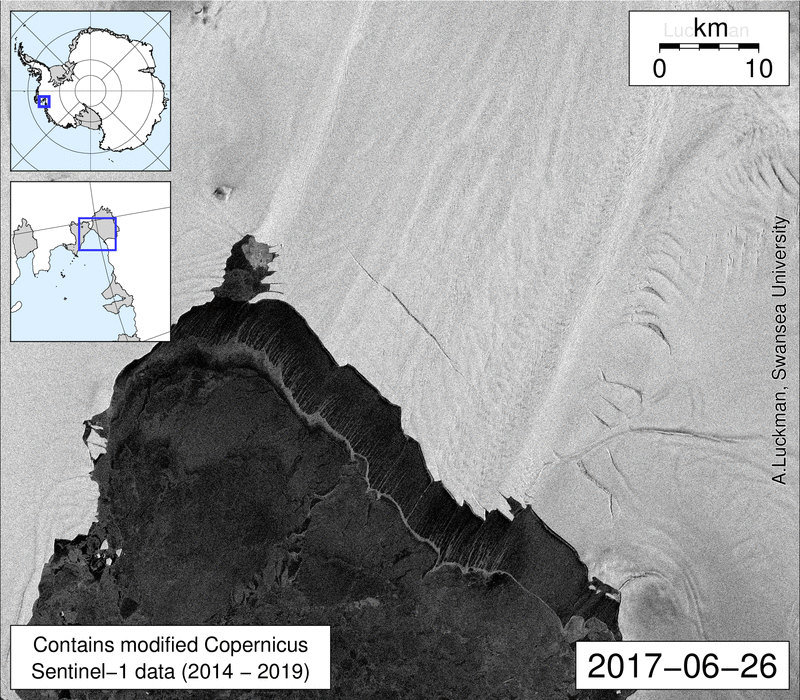SOLUTION
As you read this, billions of litres of pure drinking water are flowing out into the open sea.
Just like that!
Iceberg formation
The ice layer in the Antarctic is growing continuously. Snowfall causes increasing pressure, which acts on the ice shield. This pushes the glaciers towards the coast.
The ice shelf is pushed far out into the sea, and without the stabilising continental shelf, large ice masses are continuously becoming loose.
To put it simply: the ice breaks away the edge of the shelf – and an iceberg is born. The resulting icebergs are also called table icebergs due to their shape, which is reminiscent of flat tables.
Ice masses with a volume of around 2,300 cubic kilometres break off from the shelf like this each year. They drift further and further out to sea under the influence of the ocean currents. Many icebergs reach the South Atlantic via the circular current and melt in the open sea – just like that, with no apparent benefits.

New source
We see the use of icebergs that are already melting as an alternative, and possibly also a solution in view of the global shortage of fresh water.
As we now know, terrestrial sources are currently no longer sufficient for everyone living on this Earth. This situation will continue to deteriorate over the course of the next decades, and therefore for the next generations – which means that we are all facing a major problem.
If we continue as before, we will be forced to treat our existing water again and again so that we can continue to drink it. We will have to drill deeper and deeper into the ground to reach deeper underground water sources. In addition, we will need to build more and more desalination plants in order to obtain new water by removing salt from seawater. And for the water to remain nutritious and suitable for consumption, it will need additives.
All of this means: a greater use of energy – in a world that has committed itself to stopping climate change. It requires further encroachment on the environment that we need to protect, e.g. by deep drilling or returning of the extracted salt into the oceans. And it requires the use of filters, additives and other future methods to prevent us from getting sick, and so that we stay healthy. In the end, we will pay dearly for permanent water availability and the increasing use of technology and energy – at least, the next generations will pay. Once we have arrived at this point, water will be precious and will no longer be a freely available resource.
In order to counteract this situation, we view the use of an existing and pure source – with no interference in nature, and without a disproportionate use of energy – as a real and logical consequence. Because we don’t want to look towards a future in which people only know pure water from treatment plants.
So that this future does not need to come into being, we began working on the idea of extracting drinking water from icebergs ten years ago. Today, POLEWATER is able to utilise the largest freshwater source on our planet.
